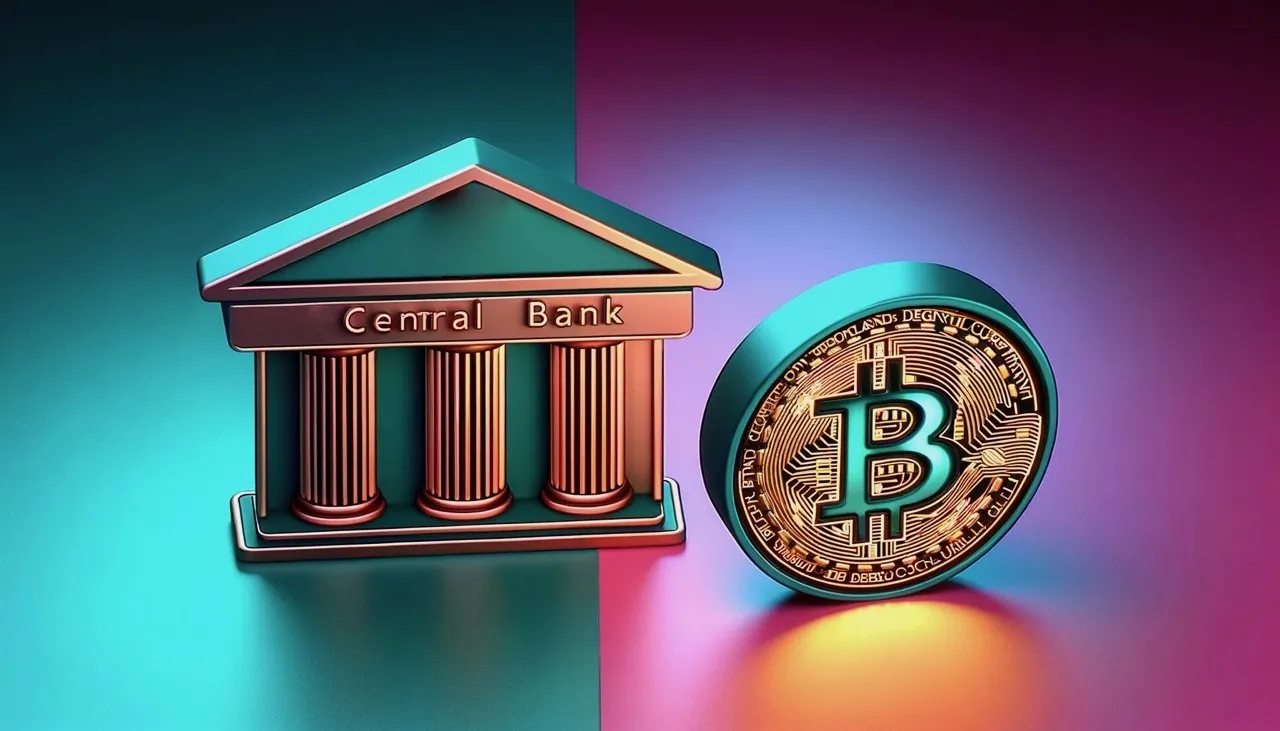A high-stakes standoff is in the process of unfolding between **Central Bank Digital Currencies (CBDCs)** and **decentralized cryptocurrencies** such as Bitcoin and Ethereum, as digital currencies rapidly remake the financial landscape. Although they both represent visions of the future of money, their paths, principles, and potential impacts are vastly different.
Therefore, who will emerge victorious in this conflict over the future of digital finance? Let us explore the fundamental nature of this rivalry, the advantages and disadvantages of each party, and the reasons why the resolution may not be as straightforward as it appears.
💸 What are CBDCs and crypto?
* **CBDCs** are digital representations of a nation’s formal currency that are issued and regulated by central banks. Their objective is to integrate the stability and trust of fiat money with the efficiency of digital payments.
* **Cryptocurrencies**, in contrast, are decentralized digital assets that frequently function without a central authority, providing user autonomy, borderless transactions, and resistance to censorship.
🥊 The Advantages of CBDCs
1. **Regulatory Support and Stability**
CBDCs enjoy legal tender status, broad recognition, and stability as government-issued money. Their objective is to maintain monetary policy control while modernizing payments.
2. **Financial Inclusion**
CBDCs have the potential to promote financial inclusion by offering digital wallets to unbanked populations, with the assistance and protection of the government.
3. **Secure and Efficient Payments**
CBDCs are intended to facilitate rapid, low-cost, and traceable transactions, which could simplify a wide range of processes, including cross-border settlements and retail payments.
4. **Resist Illicit Activities**
Unlike numerous cryptocurrencies, CBDCs can be programmed to comply with regulations, thereby assisting governments in the prevention of tax evasion and money laundering.
Strengths of Cryptocurrencies
1. **Trustlessness and Decentralization**
Those who are apprehensive about government overreach, censorship, or monetary manipulation are attracted to the fact that cryptocurrencies are not regulated by a central authority.
2. **Autonomy and Privacy**
Numerous crypto networks prioritize user privacy and provide holders with complete control over their funds without the involvement of intermediaries.
3. **Innovation and Programmability** Cryptocurrencies are the driving force behind decentralized finance (DeFi), NFTs, and smart contracts, which are establishing a completely new financial ecosystem that extends beyond basic payments.
4. **International and Borderless**
Cryptocurrency facilitates seamless, permissionless transactions across the globe, transcending political and geographical boundaries.
Points of Conflict
* **Control vs. Freedom:** CBDCs reinforce state control and surveillance, whereas crypto advocates for personal freedom and privacy. * **Centralization vs. Decentralization:** CBDCs rely on centralized infrastructure, whereas crypto relies on distributed networks.
* **Innovation vs. Regulation:** CBDCs are compliant with regulatory frameworks, but they may impede innovation; crypto challenges boundaries but is subject to legal uncertainty. * **Monetary Policy:** CBDCs facilitate direct monetary interventions; crypto operates independently of traditional policy influences.
🤝 Is there a winner?
The reality is that the CBDC vs. crypto standoff may not conclude with a clear victor. Conversely, it is feasible that we observe:
* **Interoperability and Coexistence:** Bridges could facilitate the seamless movement between CBDCs and cryptocurrencies, which could serve distinct use cases.
* **Hybrid Models:** Central banks may implement blockchain technology with differing degrees of decentralization.
* **User Choice:** Institutions and individuals have the freedom to select the digital currency that best aligns with their requirements, whether it be programmability, stability, or privacy.
🔮 Prospective
The future of digital money is intricate and ever-changing. CBDCs will introduce digital fiat to the general public with the support of the state, while cryptocurrencies continue to innovate and challenge the limits of finance and sovereignty.
Those who establish **inclusive, flexible, and secure ecosystems** that empower users—whether through centralized digital currencies, decentralized tokens, or a combination of both—will emerge as the true victors.
**Which faction do you anticipate will emerge as the dominant force, or will both sides prosper? Comment below with your thoughts!

Leave a Reply